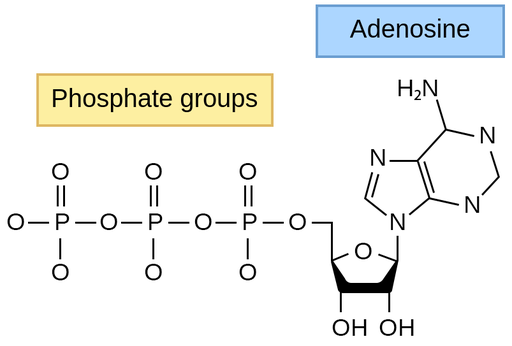- Home
- About
- Portfolio
Crush the Match – Medical School and Residency Platform
Food¢ense – Curbing Childhood Obesity and Food Waste
HealthStack – Shared and Jailed HIPAA Hosting $50
Marta Care – Let Us Help When You Can’t
MD Idea Lab – We Build Prototypes for Doctors
Nervcell – The Healthcare Web Browser
Patient Keto – Personalized Keto Medicine and Telehealth
SwipeChart – Rapid EMR Interface
Treatment Scores – Quantifying the Science of Medicine
Treatments – Diagnosed. Now What?
VIDRIO – Google Glass and EMR Interface
- Blog
- Contact
- Home
- Warp Core Health
- Blog
- Biochemistry
- Energy Showdown: Unleashing the ATP Powerhouses – Fat’s Astonishing 129 ATP vs. Sugar’s Modest 30-32 ATP
Energy Showdown: Unleashing the ATP Powerhouses – Fat’s Astonishing 129 ATP vs. Sugar’s Modest 30-32 ATP
Introduction: Understanding the energy production capabilities of different macronutrients is essential for comprehending the body’s preference for a high-fat diet. In this article, we’ll explore the fascinating world of ATP production and compare the energy yield from fat and sugar metabolism. By unraveling the secrets of ATP, we can gain insights into why the body finds fat metabolism particularly advantageous.
The ATP Comparison: Fat vs. Sugar Metabolism To understand the body’s preference for a high-fat diet, let’s examine the ATP yield from fat and sugar metabolism more accurately.
Sugar Metabolism: During the process of glycolysis, one molecule of glucose produces a net gain of approximately 2 ATP molecules. Through subsequent processes like the citric acid cycle and oxidative phosphorylation, each molecule of pyruvate derived from glucose generates an additional 28-30 ATP molecules. Therefore, the total ATP yield from one molecule of glucose is typically around 30-32 ATP molecules.
Fat Metabolism: When it comes to fat metabolism, the oxidation of one molecule of a typical fatty acid, such as palmitic acid, can produce a remarkable number of ATP molecules. The complete oxidation of one molecule of palmitic acid, a common 16-carbon fatty acid, generates approximately 129 ATP molecules.
The Significance of ATP Yield: The substantial difference in ATP yield between fat and sugar metabolism holds great significance in understanding the body’s preference for a high-fat diet. Here’s why:
- Enhanced Energy Production: Fat metabolism provides a significantly higher ATP yield compared to sugar metabolism. With around 129 ATP molecules generated from one molecule of palmitic acid, the body gains a substantial energy advantage. This abundant supply of ATP allows for sustained and long-lasting energy production, supporting endurance activities and reducing the need for frequent refueling.
- Metabolic Adaptability: A high-fat diet encourages the body to become metabolically adaptable, efficiently utilizing fats as the primary fuel source. This metabolic flexibility enables improved fat oxidation and decreased reliance on carbohydrates, which can be advantageous for weight management and overall metabolic health.
- Stable Blood Sugar Control: Unlike carbohydrates, which can lead to rapid fluctuations in blood sugar levels, fats provide a more stable and sustained release of energy. By reducing the reliance on carbohydrates and minimizing blood sugar spikes, a high-fat diet promotes stable blood sugar control, reducing the risk of insulin resistance and supporting metabolic health.
- Cognitive Benefits: The brain, a highly energy-demanding organ, can benefit from a high-fat diet. Ketones, produced during fat metabolism, can serve as an alternative fuel source for the brain. This utilization of ketones provides a steady supply of energy, promoting improved cognitive function, mental clarity, and focus.
Conclusion: The ATP comparison between fat and sugar metabolism reveals the energy powerhouse that fat metabolism represents. With a significantly higher ATP yield compared to sugar metabolism, a high-fat diet provides enhanced energy production, metabolic
Author: Dr. Stephen Fitzmeyer, M.D.
Physician Informaticist and Founder of Warp Core Health
Connect with Dr. Stephen Fitzmeyer:
Twitter: @PatientKeto
LinkedIn: linkedin.com/in/sfitzmeyer/
Recent Posts
- Protected: Warp Core Health: Building a Custom AI Model for Transforming Healthcare
- The Intersection of Healthcare, AI, Clinical Informatics, and Machine Learning
- Accessing Siloed EMR Systems with FHIR: Connecting to Multiple EMRs
- How AI and Informatics Are Transforming Healthcare
- How AI Can Transform Healthcare Applications
Categories
- ApoB
- Artificial Intelligence
- Autophagy
- Biochemistry
- Biomedical Informatics
- Biostatistics
- Blood Glucose
- CAC
- Carbs
- CCD
- CDA
- Clinical Informatics
- Coding Bootcamp
- Coronary Artery Disease
- COVID-19
- Cybersecurity
- Data Science
- Diabetes
- Diet
- EHS
- EMR
- Epidemiology
- Evidence Based Medicine
- Fats
- FHIR
- Fiber
- Generative AI
- Global Health
- Health Administration
- Health Informatics
- Health IT
- HIPAA
- HL7
- Hyperglycemia
- Hypoglycemia
- ICD 10
- Intermittent Fasting
- Ketogenic Diet
- Machine Learning
- Macronutrients
- MCT Oil
- Metabolic Health
- Metabolic Syndrome
- Minerals
- Mitochondria
- MySQL
- Neurology
- Nutritional Ketosis
- Nutritional Neurology
- Nutritional Psychiatry
- PHP
- PHR
- Programming
- Prompt Engineering
- Proteins
- Prototypes
- Public Health
- Python
- Recipes
- Sleep Health
- Stroke
- Uric Acid
- Vegan and Vegetarians
- Vitamin D
- Vitamin K2
- Vitamins

